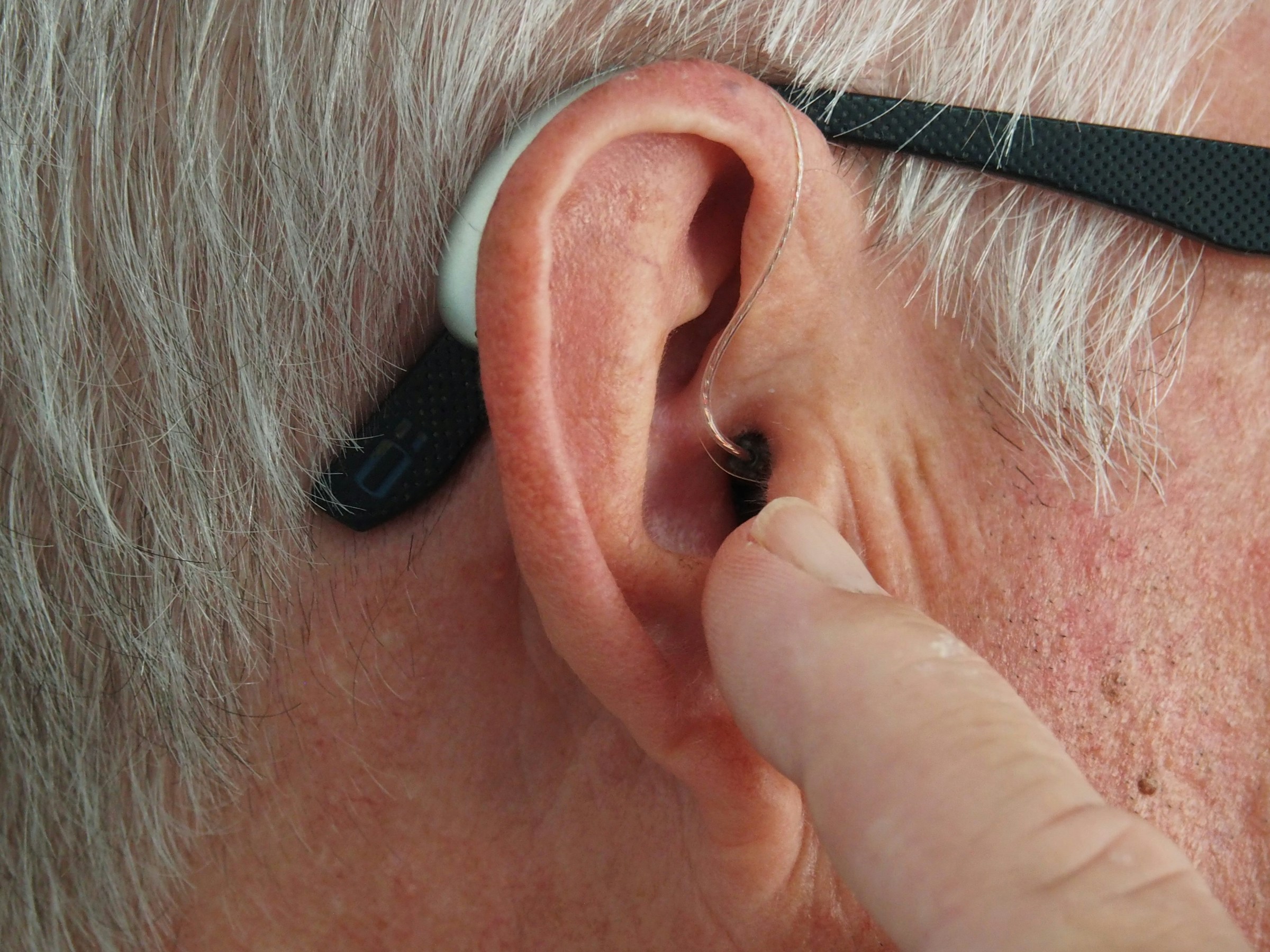The natural process of aging often brings about changes in our bodies that we may find challenging to deal with. One of these changes is the deterioration of our hearing capacity, a condition that disproportionately affects older adults, particularly those over 75. With the advances in modern technology, numerous solutions are now available to help seniors combat hearing loss more effectively. These advancements are a testament to the importance of technology in health care, specifically in the field of audiology. From hearing aids and sound amplifiers to cutting-edge phone apps and noise reduction devices, let’s delve into the latest technologies designed to enhance hearing in seniors over 75.
The Evolution of Hearing Aids
Traditionally, hearing aids have been the go-to solution for people experiencing hearing loss. Over the years, these devices have seen substantial improvements in terms of their functionality, aesthetics and comfort. Modern hearing aids are small, discreet devices that provide high-quality sound, reduce background noise, and adapt to different sound environments.
Also to read : What Are Essential Eye Care Tips for Seniors Over 80 to Prevent Dry Eyes?
Today’s range of high-tech hearing aids offer features such as Bluetooth connectivity, allowing users to connect their hearing aids directly to their phone, TV, or other devices. This means you can listen to your favorite shows or chat with your loved ones without straining to hear. Some hearing aids even connect to a smartphone app, giving users more control over their hearing experience – adjusting volume levels, selecting different modes for various environments, and even tracking hearing health over time.
Digital hearing aids also now come with rechargeable batteries, eliminating the need for constant battery replacement. This feature helps to reduce the routine maintenance that older adults may find difficult to manage.
Also read : How Should Male Seniors Over 65 Tailor Their Fitness Routine to Protect Prostate Health?
Sound Amplifiers and Personal Sound Amplification Products (PSAPs)
In addition to hearing aids, there are other devices known as sound amplifiers or Personal Sound Amplification Products (PSAPs). These products are typically less expensive than traditional hearing aids and can help people with mild to moderate hearing loss. PSAPs enhance environmental sound and speech, making it easier to hear what’s going on around you.
Some PSAPs are designed to look like regular earbuds and can connect to your phone, allowing you to stream music or make phone calls. These devices also come with customizable sound settings, enabling users to adjust the sound quality based on their hearing needs and preferences.
Smartphone Apps and Hearing Technologies
The proliferation of smartphone technology has opened up new possibilities for managing hearing loss. There are now apps available that transform your phone into a powerful hearing aid. These apps use your phone’s microphone to pick up sound, process it, and deliver it to your ears.
For instance, some apps allow users to fine-tune the audio frequencies they struggle to hear, thus personalizing the sound to their unique hearing needs. There are also apps that provide real-time speech-to-text transcription, which can be particularly useful in noisy environments or during phone calls.
Another impressive development is the advent of assistive listening devices (ALDs). These gadgets are designed to improve hearing ability in specific situations, like watching television or attending a lecture. They work by directly transmitting sound from the source, such as a TV or microphone, to the user’s hearing aid or headset, thereby reducing the impact of background noise.
Noise Reduction and Sound Management Technologies
One of the biggest challenges for people with hearing loss is distinguishing speech from background noise. This is where noise reduction and sound management technologies come into play. These technologies work by reducing background noise and enhancing speech, making it easier for individuals to engage in conversations, even in noisy environments.
For instance, some hearing aids now have directional microphones that focus on the sound coming from in front of you, thereby reducing the sounds coming from other directions. There are also hearing aids with wind noise reduction features, which can be particularly helpful for those who enjoy spending time outdoors.
Professional Care and Support
Despite the array of gadgets and technologies available, it remains crucial for seniors suffering from hearing loss to have regular check-ups with audiologists or hearing health professionals. These experts can provide personalized care, perform comprehensive hearing tests, and help seniors choose the right device or technology based on their specific needs and lifestyle.
Tele-audiology, a method of providing audiology services remotely, has also become more prevalent in recent years. This allows seniors to access professional hearing care and support from the comfort of their own homes.
To sum things up, while hearing loss remains a common issue among seniors, numerous innovative solutions are available to help manage this condition. The key is to stay informed about the latest technologies and to seek professional advice to find the best solution for your individual hearing needs. And remember, there’s no one-size-fits-all answer when it comes to hearing health. The best solution is the one that fits your lifestyle and makes you feel comfortable.
Over-The-Counter Hearing Aids and Assistive Listening Devices
Over-the-counter (OTC) hearing aids represent a significant milestone in hearing health care. Akin to reading glasses that can be bought without a prescription, OTC hearing aids can be purchased directly by consumers without needing an audiology professional’s intervention. This development can increase access to hearing aids for many older adults who may have previously found them inaccessible due to cost or availability issues.
OTC hearing aids are designed to ameliorate mild-to-moderate hearing loss and come with adjustable settings that allow the user to tailor the device according to their hearing needs. They are not only affordable but also offer a level of convenience that traditional prescription hearing aids do not. However, it should be noted that these devices may not be suitable for seniors with severe hearing loss, thus, professional advice is recommended before making a purchase.
On the other hand, assistive listening devices (ALDs) can augment the functionality of hearing aids or even serve as standalone devices. These technologies can facilitate improved hearing in challenging environments, such as places with a lot of background noise or where the sound source is far from the listener. For instance, an ALD can be connected to a TV or a microphone and transmit the sound directly to the listener’s hearing aid or headphones, hence reducing the interference from ambient noise.
Artificial Intelligence and Future Prospects in Hearing Technology
Artificial Intelligence (AI) is a promising area in the realm of hearing technology. AI can improve the quality of life for older adults with hearing loss by providing tailored solutions. For instance, AI-powered hearing aids can analyze the acoustic environment and adjust the sound settings in real time, enabling better speech understanding even in noisy surroundings.
Moreover, AI can also enable hearing devices to learn from the user’s preferences and habits over time, providing a highly individualized hearing experience. For instance, the device might learn to automatically decrease background noise when in a crowded restaurant, but enhance ambient sounds during a quiet walk in the park.
While it is still an emerging field, the potential for AI in enhancing hearing health is tremendous. With ongoing research, we can expect even more revolutionary developments that will transform the hearing experience for older adults.
Conclusion
The landscape of hearing health technology is evolving rapidly, offering a plethora of options for older adults experiencing hearing loss. From modern, discreet hearing aids with Bluetooth connectivity, customizable sound amplifiers, smartphone apps, noise reduction technologies, to groundbreaking developments in AI, the options are vast and continually expanding.
However, it’s crucial to remember that while technology can significantly improve the quality of life for those with hearing loss, regular checkups with hearing health professionals remain essential. This ensures that the chosen devices or technologies are suitable for the individual’s specific hearing needs.
In the quest to combat hearing loss, it’s not about finding the best hearing aid or the most advanced gadget. Rather, it’s about finding the right tools that will enhance one’s hearing health and ultimately, improve their quality of life. As we move forward, it’s encouraging to know that technology is playing a huge role in ensuring a better quality life for older adults with hearing loss in the United States and beyond.











